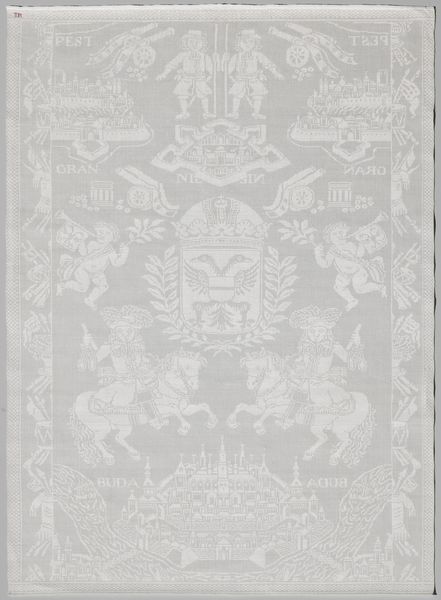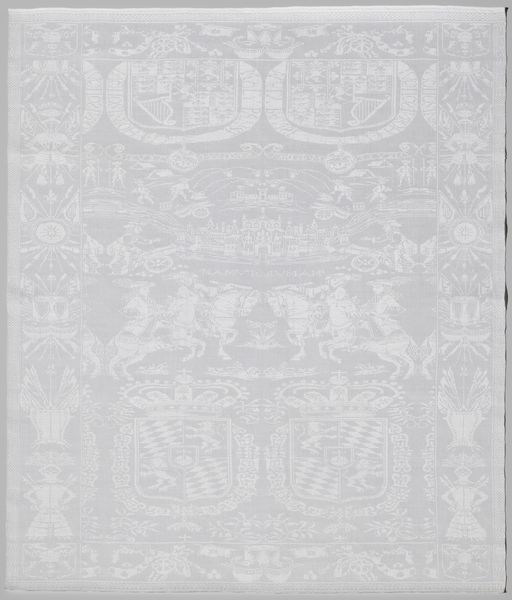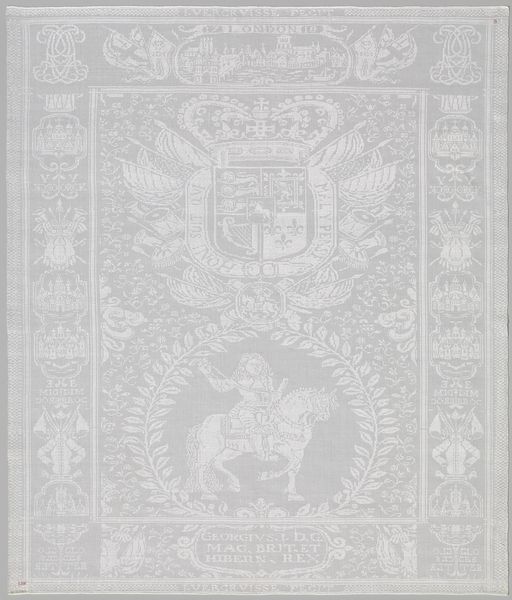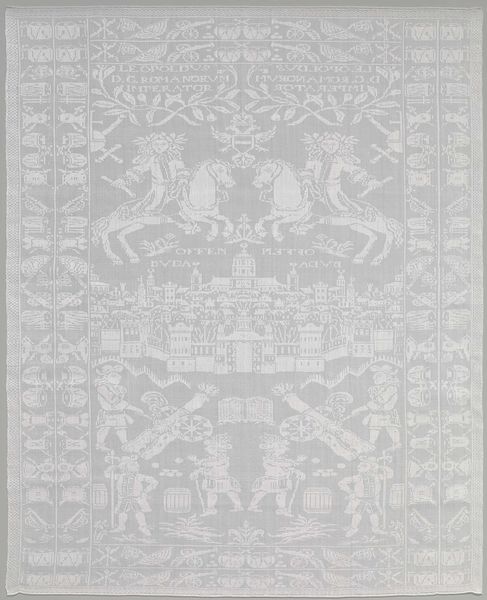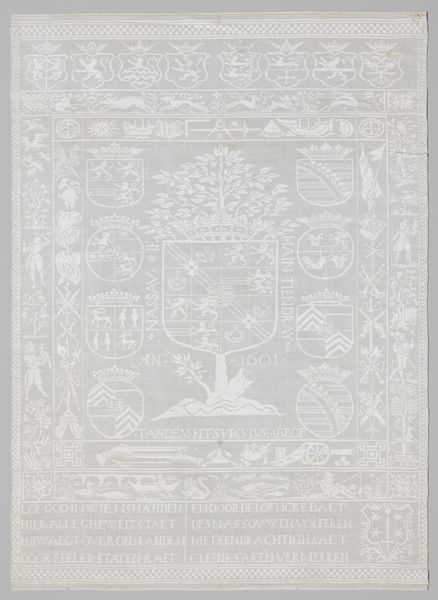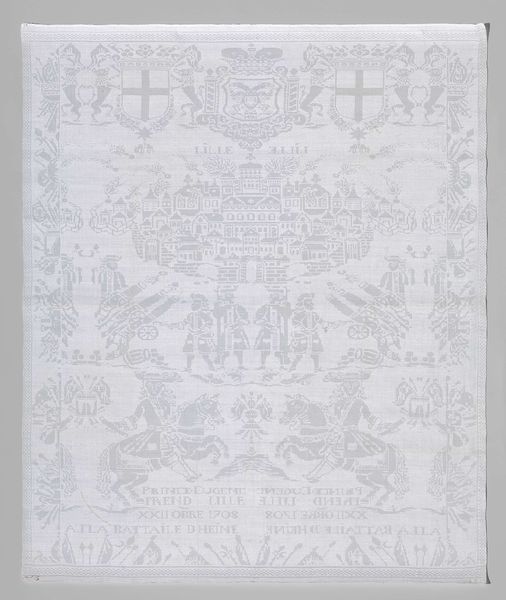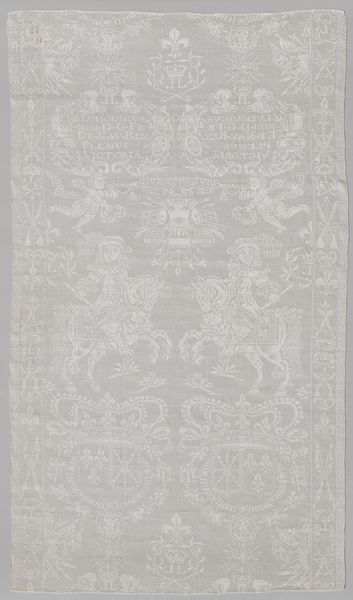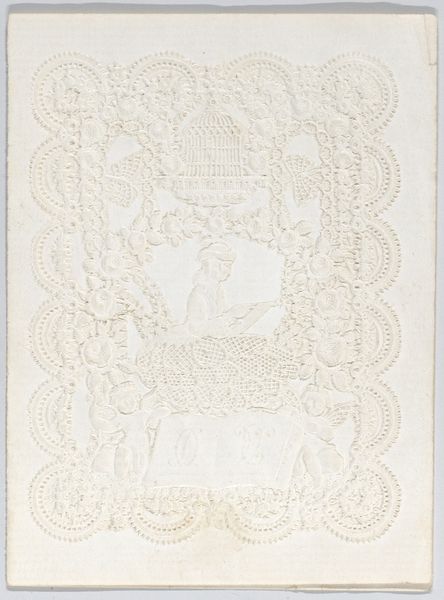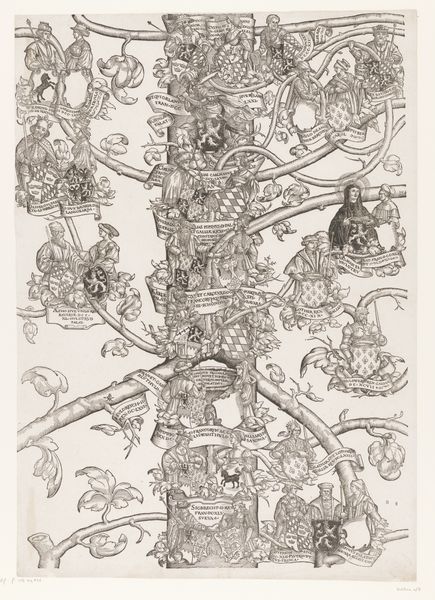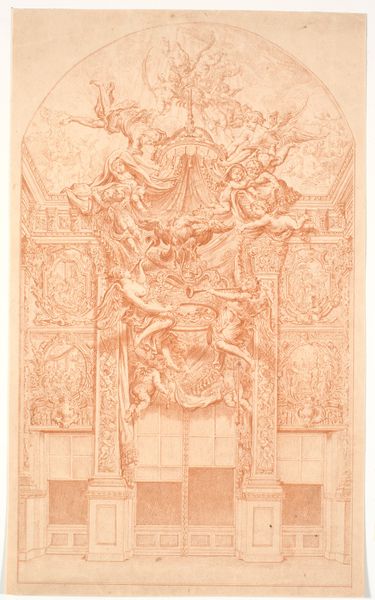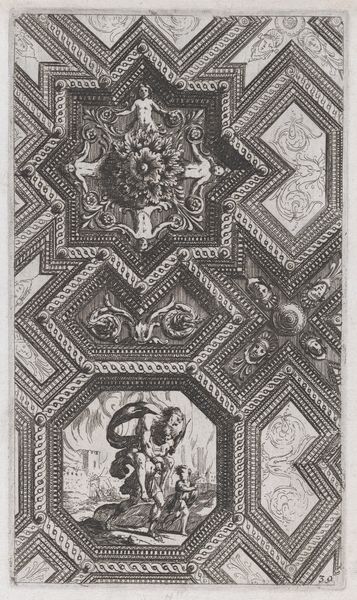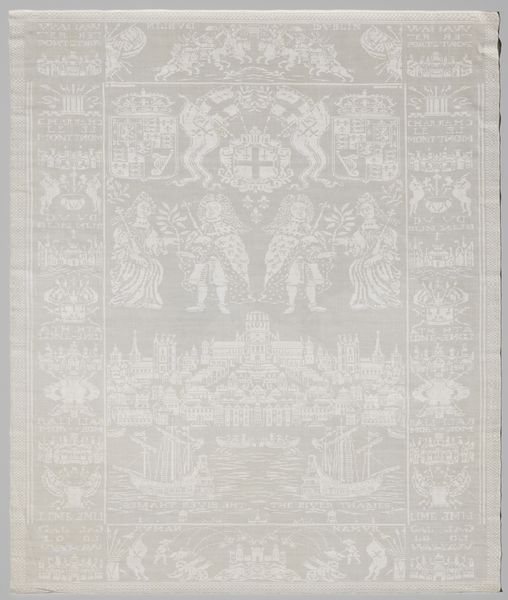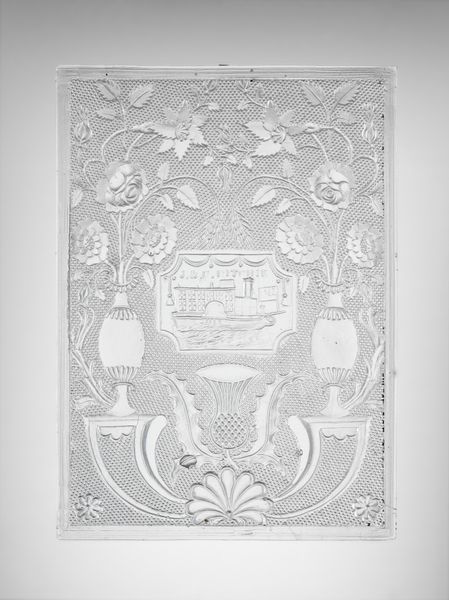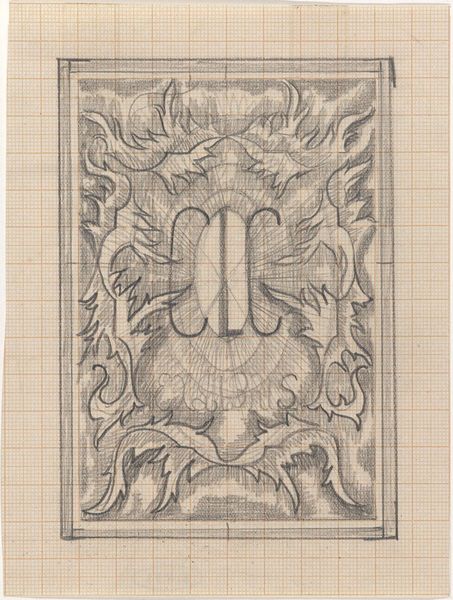
Servet met een ruiterportret en het wapen van Don Juan Domingo de Zuñiga y Fonseca, graaf van Monterey 1667
0:00
0:00
drawing, textile
#
portrait
#
drawing
#
baroque
#
textile
#
genre-painting
#
history-painting
Dimensions: height 134 cm, width 91 cm
Copyright: Rijks Museum: Open Domain
Curator: Here we have a remarkable textile work from 1667, a servant with a portrait of Don Juan Domingo de Zuñiga y Fonseca, Count of Monterey. Editor: At first glance, it feels almost ghostly. The monochrome palette creates a striking visual effect. It makes me think of historical memory, a faded grandeur rendered in delicate threads. Curator: The context here is vital. Zuñiga was a prominent figure in the Spanish court. Textiles, particularly those bearing portraits or heraldic symbols, served as potent displays of power and allegiance. It makes me wonder who designed this? Was it intended for his personal use, or as a political tool for wider dissemination of his image and the narrative of his governance? Editor: Look at the equestrian portrait—the horse almost leaps off the fabric! It seems the artist wants to create a sense of power by depicting Zuñiga riding above a cityscape that I'm sure would be symbolic to his legacy. The symbols all allude to honor, history, a tangible connection to past victories, while instruments of war surround his regal pose. Curator: Absolutely. This image and the whole object are instruments that project images of authority and legitimacy in a society deeply structured around hierarchy and visual codes. I also can't ignore the material reality of textile as it's connected with gendered labor. How many anonymous hands contributed to the production of this symbol of patriarchal power? Editor: It certainly complicates our understanding, doesn't it? But these layers—power, history, craft—become embedded within its fibers over time. Even in its faded state, the textile retains its inherent narrative force. It speaks to the enduring human fascination with portraying our legacy through imagery, even when, or perhaps especially when, these legacies are fraught with complexities and questions. Curator: I find myself lingering on these threads of conflict, both within the artwork and around it. The act of studying its threads, both literally and metaphorically, becomes a process of unraveling the very foundations of that world. Editor: An elegant thought. To perceive within a simple portrait an echo of so much culture that has changed.
Comments
No comments
Be the first to comment and join the conversation on the ultimate creative platform.
